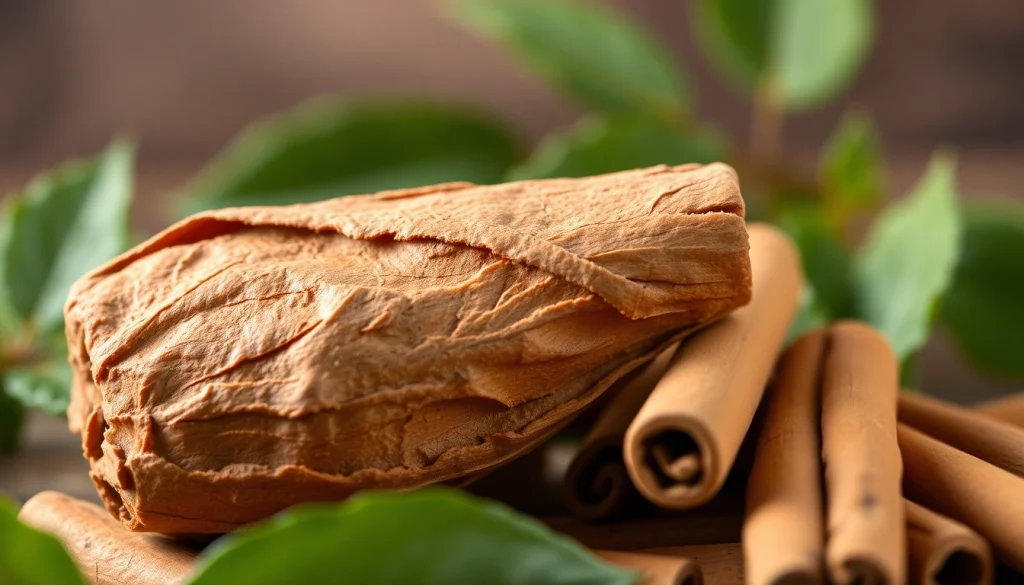
Understanding Cinnamon Bark: Origins and Varieties
Cinnamon bark, derived from the bark of trees belonging to the genus Cinnamomum, has held a place of importance in culinary and medicinal practices for centuries. Known for its distinct flavor and aromatic qualities, cinnamon bark can be divided into different varieties, primarily Ceylon and Cassia. This article delves into the origins, harvesting methods, nutritional profile, culinary applications, medicinal uses, and safety considerations surrounding this beloved spice. To explore a unique offering of cinnamon bark, check out Cinnamon Bark.
Cinnamon Bark Types: Ceylon vs. Cassia
The two primary types of cinnamon bark are Ceylon cinnamon (often referred to as “true” cinnamon) and Cassia cinnamon, with each having unique characteristics and uses.
- Ceylon Cinnamon: Native to Sri Lanka and India, Ceylon cinnamon has a lighter color and a more complex flavor profile with sweet and delicate notes. Ceylon cinnamon is less concentrated in coumarin, a natural compound that can be harmful in high doses, making it a safer choice for regular consumption.
- Cassia Cinnamon: Often found in supermarkets, Cassia cinnamon is darker, has a stronger flavor, and is derived from the Cinnamomum cassia tree. This variety is typically less expensive but has higher coumarin levels, which can pose health risks if consumed excessively.
How Cinnamon Bark is Harvested
The harvesting process of cinnamon bark is laborious and requires skillful techniques. Harvesters strip the inner bark from the cinnamon tree during specific seasons when the sap is high. The outer bark is removed, leaving the inner bark to curl as it dries, producing the characteristic quills. This meticulous process ensures that the bark retains its flavor and aroma. The bark is then dried in the sun before being packaged for sale—either whole or ground.
The Cultural Significance of Cinnamon Bark
Cinnamon has been woven into the cultural fabric of various societies. In ancient Egypt, it was revered as a valuable commodity and was used in rituals and embalming. In traditional Chinese medicine, cinnamon is often included in herb formulations due to its warming properties. Throughout history, the spice has symbolized wealth and status, leading to its association with numerous culinary traditions worldwide.
Nutritional Profile of Cinnamon Bark
Cinnamon bark is more than just a flavor enhancer; it is packed with essential nutrients and beneficial compounds that contribute to its health benefits.
Essential Nutrients in Cinnamon Bark
This spice contains a variety of important nutrients, including:
- Antioxidants: Cinnamon is rich in polyphenols and flavonoids, which help combat oxidative stress in the body.
- Minerals: It provides minerals such as manganese, iron, and calcium, contributing to overall health.
- Essential Oils: The aromatic oils, including cinnamaldehyde, give cinnamon its distinct flavor and have been associated with various health benefits.
Health Benefits of Cinnamon Bark
The health benefits of cinnamon bark are extensive and well-studied. Some of the most notable benefits include:
- Anti-Inflammatory Properties: The compounds found in cinnamon demonstrate robust anti-inflammatory effects, which can help reduce chronic inflammation and lower the risk of various diseases.
- Blood Sugar Control: Cinnamon bark may improve insulin sensitivity and help lower blood sugar levels, making it beneficial for individuals with diabetes.
- Heart Health: Its high antioxidant content, along with the potential to reduce cholesterol levels, contributes to overall cardiovascular health.
- Digestive Aid: Cinnamon can ease digestive discomfort, nausea, and bloating, making it a common ingredient in digestive blends.
Comparison: Cinnamon Bark and Other Spices
When compared to other spices, cinnamon bark stands out for its unique flavor profile and health benefits. For example, while ginger and turmeric offer benefits related to digestion and inflammation, cinnamon is more recognized for its antioxidant properties and ability to regulate blood sugar. Its versatility allows it to enhance both sweet and savory dishes, making it multifaceted in culinary applications.
Culinary Applications of Cinnamon Bark
The culinary uses for cinnamon bark are as diverse as its varieties, ranging from sweet desserts to savory dishes, flavorsome beverages to traditional medicine preparations.
Popular Dishes Featuring Cinnamon Bark
Cinnamon bark can be a star ingredient in numerous cuisines and recipes, including:
- Cinnamon Rolls: A classic breakfast pastry where cinnamon bark is crucial for the spiced filling.
- Chai Tea: Commonly made with Ceylon cinnamon, this aromatic tea blends warm spices for a comforting drink.
- Curry Dishes: Many Indian and Thai curries incorporate cinnamon to enhance the flavor profile.
- Baked Goods: From cakes to breads, cinnamon is a favorite flavoring that adds warmth and sweetness.
How to Use Cinnamon Bark in Cooking
The way cinnamon bark is utilized in cooking can vary significantly depending on whether it’s being used whole or ground:
- Whole Sticks: Ideal for simmering in soups, stews, or curries, whole sticks infuse their flavor into the dish over time and can be removed before serving.
- Ground Cinnamon: This form is perfect for baking, where it can be mixed directly into batters or sprinkled on top of dishes like oatmeal and fruit.
Pairing Cinnamon Bark with Other Ingredients
Cinnamon bark pairs beautifully with a variety of other flavors. For instance:
- Fruits: It complements apples, pears, and bananas, enhancing their sweetness and flavor.
- Nuts: Almonds and walnuts provide a rich texture to dishes featuring cinnamon, creating satisfying contrasts.
- Spices: Cinnamon pairs well with nutmeg, clove, and ginger, often found in traditional spice blends.
Medicinal Uses of Cinnamon Bark
Beyond culinary applications, cinnamon bark has garnered attention for its numerous medicinal benefits, often supported by both traditional uses and modern research.
Cinnamon Bark for Digestive Health
Cinnamon bark has been traditionally used to alleviate various digestive issues, including gas, bloating, and loss of appetite. Its antimicrobial properties can help maintain gut health by fighting off harmful bacteria, improving digestion, and reducing discomfort associated with gastrointestinal upset.
Potential Benefits for Blood Sugar Control
Studies have shown that cinnamon can enhance insulin sensitivity, making it a promising option for managing blood sugar levels. Regular inclusion of cinnamon bark in the diet may help stabilize blood sugar, particularly beneficial for individuals with type 2 diabetes. However, it is essential to combine cinnamon consumption with a balanced diet and consult healthcare professionals for personalized advice.
Using Cinnamon Bark for Respiratory Issues
The anti-inflammatory properties of cinnamon bark also make it beneficial for respiratory health. Cinnamon can help alleviate symptoms of common colds and flu by acting as a decongestant, soothing sore throats, and providing relief from coughs. Traditional remedies often incorporate cinnamon in mixtures with honey and other soothing ingredients for enhanced effects.
Safety and Side Effects of Cinnamon Bark
While cinnamon bark offers numerous health benefits, it is crucial to consider its safety and potential side effects to maximize its benefits without harming your health.
Potential Risks and Allergies
For most individuals, cinnamon is safe when used in culinary amounts. However, excessive consumption can lead to adverse reactions, primarily due to coumarin in Cassia cinnamon, which can be toxic in large doses. Moreover, some individuals may experience allergic reactions, leading to rashes or other severe symptoms.
Recommended Dosages of Cinnamon Bark
The typical recommended dosage for health benefits ranges from one to six grams of cinnamon per day, depending on the form used. It is best to consult with a healthcare provider for personalized recommendations, particularly for those with underlying health conditions or those pregnant or breastfeeding.
Consulting with a Healthcare Provider about Cinnamon Bark
As with any supplement or dietary change, it is wise to discuss the inclusion of cinnamon bark in your diet with a healthcare provider—particularly if you are on medications for blood sugar control or suffer from liver issues, as high doses can result in liver toxicity.






